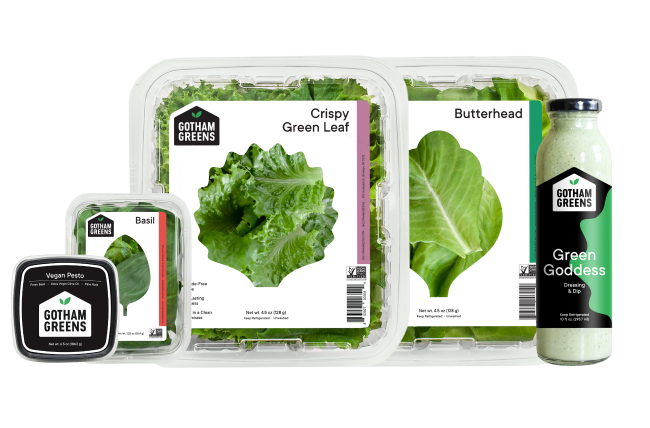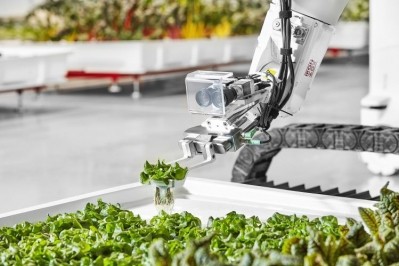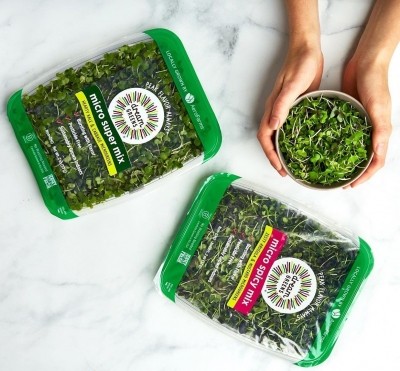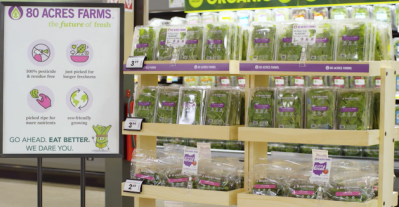Gotham Greens goes west to unlock next growth chapter: ‘The indoor environment is relatively unexplored but offers fantastic opportunities’
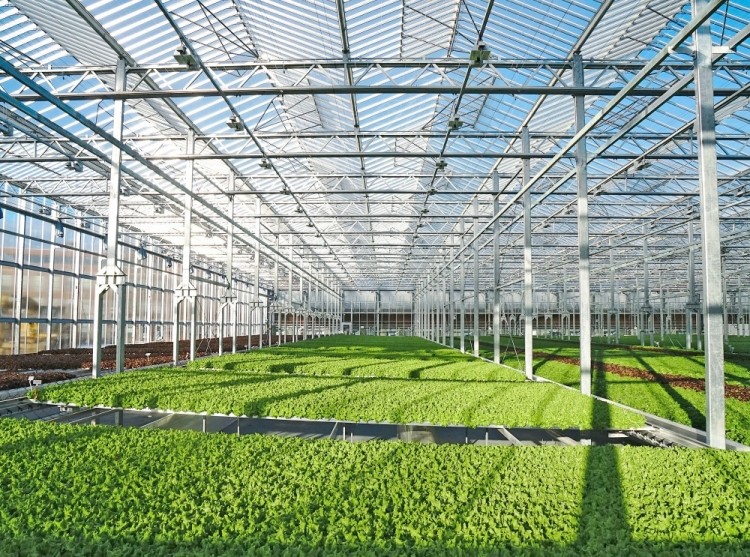
Expanding to Solano, California, where the greenhouse will be co-located with the University of California-Davis (UC Davis), is a significant milestone for the company that has thus far built greenhouses in its home state of New York, Rhode Island, Maryland, Illinois, and Colorado.
“California is a significant contributor to the nation’s produce industry in several ways. Not only is California responsible for growing one-third of the country’s vegetables and two-thirds of the nation’s fruits, but also it is home to numerous research institutes, industry groups, and suppliers,” Gotham Greens co-founder and CEO Viraj Puri told FoodNavigator-USA.
While working to produce hydroponic indoor lettuce on a mass scale for West Coast consumers is a major goal with the new greenhouse facility, Puri added that its partnership with UC Davis will help drive the next wave of innovation in controlled environment agriculture (CEA).
“The location of this new greenhouse uniquely enables opportunities for Gotham Greens to play a greater role in the produce industry as well as collaborate on research and innovation with the University of California system focused on advancing the science, workforce, technology, and profitability of indoor agriculture globally,” he said.
'Over time, we’ve increased the use of automated systems'
As the top producing state of lettuce, the California agriculture industry has battled with many issues such as heavy rains and flooding to months-long drought periods that have resulted in supply shortages and price increases.
Indoor agriculture such as the greenhouse hydroponic solution Gotham Greens has brought to market could provide a viable solution to all these issues, it claims.
Gotham Greens grows its greens uses natural sunlight and hydroponic systems which uses 95% less water and 97% less land than conventional farming.
“Over time, we’ve increased the use of automated systems to ensure that temperature, humidity and light levels, as well as air composition, are exactly the right balance,” said Puri.
The end product is packaged fresh greens which are beginning to reach cost parity with commoditized field-grown lettuce. A 4.5-ounce package of Gotham Greens Romaine lettuce for example costs $3.49 on average compared to a head of conventional Romain lettuce which retails for $2.28 (in Chicago), according to USDA market price data.
Consumers also have the extra security of knowing that the lettuce they purchased is fresh since the produce traveled a much shorter distance and passed through fewer hands than is typically required for field-grown lettuce, noted Gotham Greens.
Size of the prize
Puri noted that while just a small fraction of the overall lettuce category, the potential addressable market for indoor-grown, packaged leafy greens and herbs in the US and Canada is $15bn.
"While indoor farming currently represents a small portion of the salad and leafy greens market, Gotham Greens is growing +70% year over year and the indoor farming sector is growing more than +50% year over year*, far outpacing the overall category (+15% YoY) as well as the organic segment (+9% YoY)," he said.
*Nielsen Total US xAOC Lettuce and Pre Packaged Salads, Dollar Sales, Latest 52 weeks ending 1/23/21
Advantages of greenhouse farming
Asked whether the company would ever explore a vertical farming model, which in theory could use less land to produce equal amounts of lettuce, Puri noted that its greenhouse method mixed with technology is a more flexible and economic solution.
“Vertical farming is an exciting extension of modern greenhouse farming with many shared principles, but it is still a relatively young industry with open questions around technology and financial sustainability. Fully indoor environments that rely on artificial light and HVAC systems can theoretically offer much higher yields and levels of climate control, pest management and food safety. However, these benefits currently come with significantly higher capital and operating costs,” said Puri.
Plant varieties optimized for indoor growing
The company has proved its system can work at a large scale (Gotham Greens products are available in 40 states and at 2,000 retail stores), but there are many new areas it can explore to further optimize its growing methods.
“One area of particular interest for UC Davis is the breeding of improved crop varieties for indoor agriculture. For several centuries, plant breeders have focused on selecting and breeding crops suited to outdoor conditions, where they have been successful. The indoor environment, in contrast, is relatively unexplored but offers fantastic opportunities to use lights and nutrients to modify plant development, nutritional quality, yield and shelf-life,” said professor Gail Taylor, chair of the UC Davis Department of Plant Sciences.
“Much remains to be explored over the coming years to ensure safer, cleaner and more sustainable food.”
‘We are interested in the complementary nature of indoor and outdoor agriculture’
Gabe Youtsey, chief innovation officer, UC Agriculture and Natural Resources, believes the CEA industry a new and exciting frontier for agriculture.
“New genetics, data-driven intelligent farming, farm automation, energy optimization, and other technologies can all be brought together to create a range of new tasty, healthy, and sustainable food products. We are interested in the complementary nature of indoor and outdoor agriculture, and the opportunity to help expand a local footprint of food production that is less resource-intensive and create a new generation of diverse young farmers,” Youtsey told FoodNavigator-USA.
The greenhouse will generate 60 new full-time jobs and create a new type of opportunity for UC Davis students that want to pursue CEA as a career.
